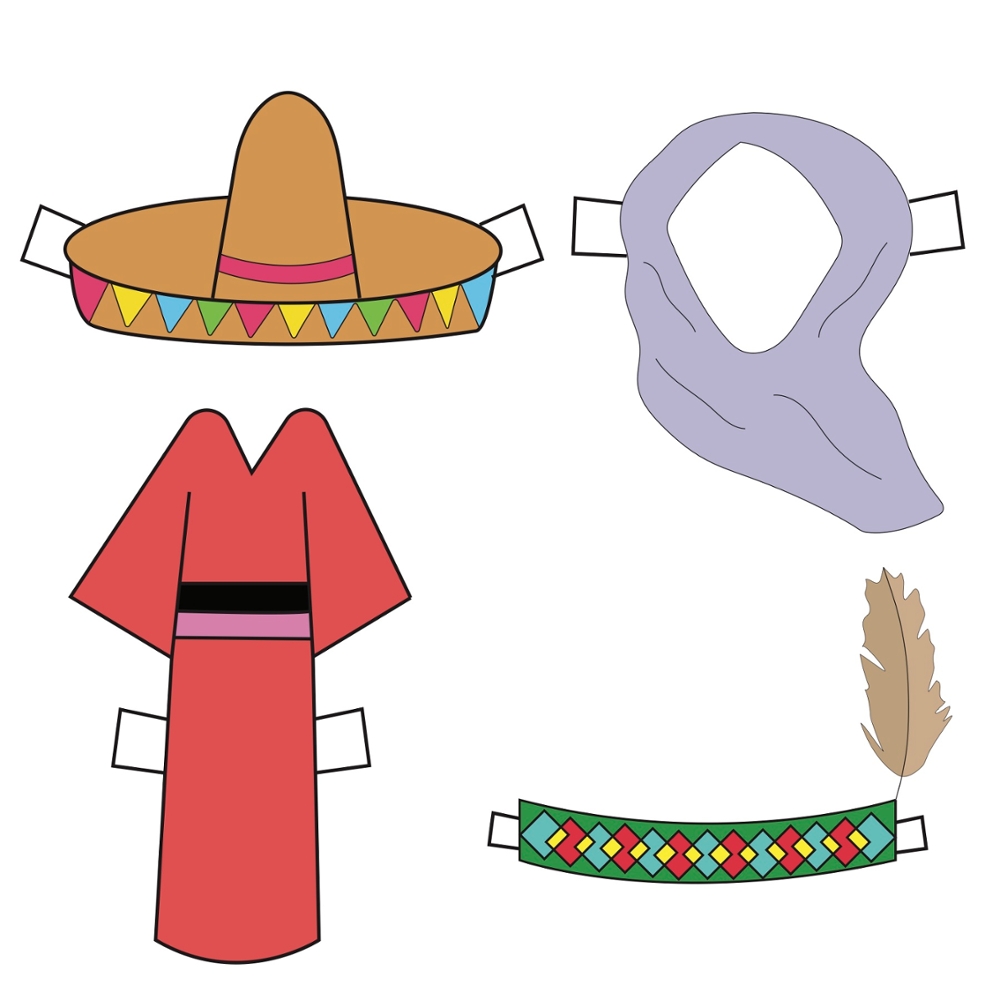My View: Is the Costume Worth It?
October 25, 2019
- Before you dress up this Halloween, be sure your costume isn’t someone else’s culture.
- RCAH students respond to the concept of cultural appropriation.
- Perspectives of cultural appropriation shared by those who are directly affected, people of color.
Story and Illustration By Chrystel Lopez '22
 Halloween has always been my favorite cavity-filled holiday. Scary movies, chocolates and lollipops, plastic skeletons, and creative costumes are the reason why fall is so fantastic!
Halloween has always been my favorite cavity-filled holiday. Scary movies, chocolates and lollipops, plastic skeletons, and creative costumes are the reason why fall is so fantastic!
But when the costumes depict racist stereotypes, the holiday loses its magic. It’s downright degrading to see someone dressed in gaudy gold hoops that spell “Latina” while sporting short shorts, a Puerto Rican flag tube top, and an obvious spray tan.
Believe it or not, this is cultural appropriation: a blatant fetishization of my culture, reducing me and my ancestors to objects of gratification. It’s not the inappropriate attire that irks me. It’s the appropriate tie to my history. I will fight for anyone’s right to wear what they feel powerful in-until that clothing diminishes the power and worth of another.
A large part of identity is culture, which was stifled and stolen by colonizers. As a result, it can be intimidating to speak up about an issue that directly impacts your personhood.
“Cultural appropriation affects me because I’m slandered for who I am racially,” said RCAH student Alyssa Briones '22 of Lansing. “Like, my ethnicity is not even on a form because people don’t believe in it, yet it’s a costume someone can buy for $30 and do whatever they want for a night. I can’t remove my skin, so you shouldn’t be able to wear it.”
White people continue to use their power to steal art, ideas, and dress from other ethnicities. As we approach Halloween, this becomes a lot more prevalent when indigenious headdresses, calaveras (Dia de los Muertos sugar skulls), and black face are worn by white skin. These are not costumes; they are representative of culture, creation, and identity. For example, brightly decorated sugar skulls commemorate family members who have passed. This is part of the culture’s “acceptance of death,” explained by Princeton University sociology professor Patricia Fernandez Kelly in her journal article Death in Mexican Folk Culture.
“These complex and diversified folkloric traditions-the poetry and songs, the masks and sculpture-inevitably suggest the enormous tenacity and wisdom of a people and a culture whose oppressed situation has not been an obstacle for the expression of a unique and creative philosophy of life and death," Fernandez Kelly said.
This doesn’t mean that you can’t find these things lovely because… well of course they are! Kimonos, hijabs, and saris are beautiful, artistically influenced garments. But they don’t belong to everyone. If someone is attending a culturally significant event, intends to respect the culture, and has permission from those of the culture, then it may be worn. But if the clothing is worn to mock, or enforce stereotypes or microaggressions (which usually is the case at Halloween, whether we know it or not), then it is important to address this as a form of bigotry.
Culturally influenced art is a form of language and enriches local communities by diversifying beliefs and strengthening communication. When this form of identity is mocked or stolen, it is damaging to the people it belongs to. In order to allow cultures and communities to thrive, we must teach people the negative impacts of stereotyping.
“This only happens by speaking up and calling out appropriation when it shows up, said RCAH student Julia Stroman ‘22 of Novi. "The main issue is that most people are genuinely unaware of what constitutes cultural appropriation, so the first step is creating a society that is fully aware of it."
RCAH Communications Intern Chrystel Lopez is a sophomore at MSU from Novi, Michigan double majoring in arts and humanities and journalism. She enjoys photography, watching movies, and doodling weird faces on her homework.

